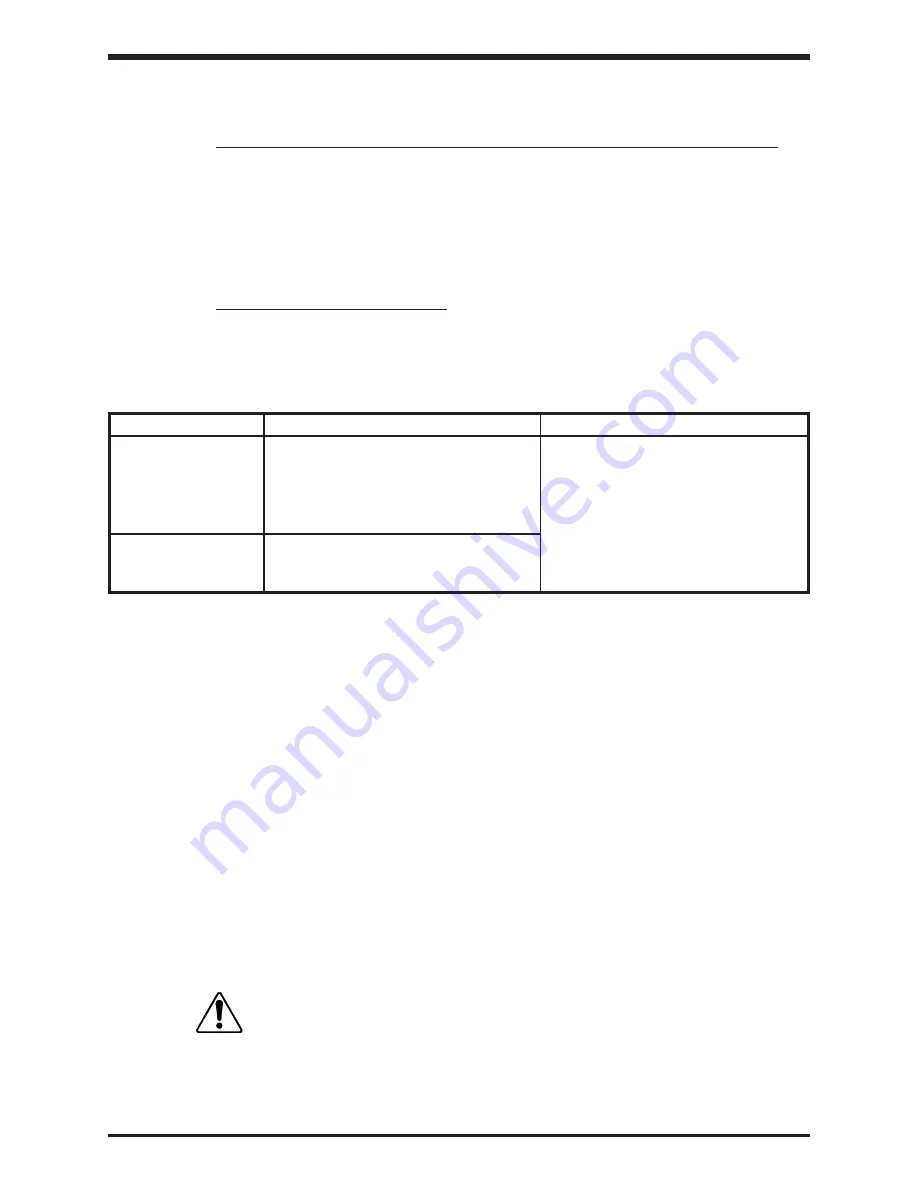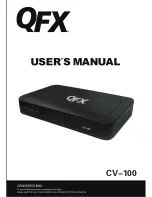
TOSHIBA
Cause of fault
Reset Process
Reset Failure Conditions
Overcurrent
Tries to restart 5 times in succession
The reset process follows this chart
Overload
1st restart: 1 sec. after problem occurs.
unless a fault, other than those listed,
2nd restart: 2 sec. after 1st restart.
occurs. If this happens the inverter will
3rd restart: 4 sec. after 2nd restart .
not try to reset.
4th restart: 8 sec. after 3rd restart.
5th restart: 16 sec. after 4th restart.
Overvoltage
Trips, displays OP, sets fault relay until
overvoltage condition is removed.
Fault relay will be cleared after reset.
AUTO RESET CONDITIONS
9.3
COMMUNICATION GROUP PARAMETERS
AUTOMATIC RESTART AFTER INSTANTANEOUS POWER FAILURE SELECTION
(ITEM 1) - Use this function to select auto-restart on or off. When selected, the inverter
will automatically restart into a free-rotating motor. This restart will occur only after an
instantaneous power interruption has occurred. The function allows the inverter to
sample the speed of the free-rotating motor at the end of the interruption and output a
matching frequency when power is reapplied. This assures smooth restarts of a free-
running motor when an instantaneous power loss has occurred, such as when the
system is switched from a commercial bypass run to an inverter run.
AUTOMATIC RESET SELECTION (ITEM 2) - When this function is selected, the inverter
will automatically try to reset itself and restart the motor when a protective function
activates fault trip. The following chart shows the auto-reset procedure for over-current
and over-voltage fault trips.
If the inverter is able to reach the original operating speed where the trip occurred, while
trying to restart, then the reset process counter resets to zero. The process now begins
again from 1st restart even if the original overcurrent condition still exists. While
preparing for a reset, the auto-reset function causes the fault code "0.0" to be displayed
alternately on the monitor display. Fault detection signals are not output during the
reset process. If the cause of the failure has not been corrected, then the intervals
before each attempted reset will be prolonged (See above chart).
If the load exhibits
an extremely large amount of inertia, automatic restart using the above procedure
may not work.
No restart is tried when any of the following messages are displayed:
"OCA" Overcurrent (transistor short-circuit at start-up)
"OCL" Overcurrent (load end short-circuit at startup)
"EF"
Ground fault
"E"
Emergency stop ('drive trip' which stops all output to motor provided that no
internal failure has occurred)
"EEP" EEPROM failure
9 - 5
CAUTION
Before using the automatic reset function, check to be
certain that the auto-reset procedure will not damage or
otherwise cause problems for the load equipment when the
restart operations are being executed.
efesotomasyon.com -Toshiba inverter,drive,servo,plc
















































